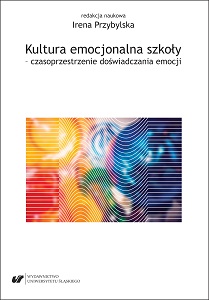Uczeń uchodźca – doświadczenia i emocje towarzyszące sytuacji uchodźczej a społeczno-kulturowe ulokowanie szkoły
Refugee pupil - experiences and emotions of a child in a refugee situation versus the socio-cultural location of a school
Author(s): Ewa Bielska
Subject(s): Education
Published by: Wydawnictwo Uniwersytetu Śląskiego
Summary/Abstract: The exile is a natural element of functioning in the context of modern nation states. According to UNHCR estimates, children currently make up about 41% of the refugee population. The results of diagnostic tests conducted in Western Europe, Canada and the United States of America show that the most common incidents that refugees encounter include war experiences, witnessing an explosion or fire, experiencing physical assault and armed robbery, being subjected to torture, sudden death of a family member, witnessing the sudden death of others as a result of an attack, being imprisoned, participating in a transport accident, and experiencing life threatening experiences. The traumatising experiences of children are linked to the context before the decision to migrate, to the context of moving to the country of destination and to the context of staying in the country of destination. The subject of the analyses undertaken in the article will be the typical emotions experienced by children in a refugee situation (both migrating with their parents and children deprived of adult care), then the recognized strategies of aid work with the refugee child and the prospects for their implementation in the school, taking into account the social and cultural context in which it is located. It will also take into account the emotions experienced by the assisting professional and strategies for preventing secondary traumatisation, illness or injury, economic risk, risk of interpersonal violence, including stigmatisation, domestic violence and, in the case of children, abandonment and death of the parent as a result of a war situation. Regardless of the traumatic experience in the country of origin (premigratory trauma), refugees are additionally exposed to indirect stressors (located between premigratory trauma and postmigratory stressors) related to the necessity to leave their own homeland and postmigratory stressors related to settling in a new social and cultural context, participation in the process of acculturation. These are the factors determining the course of adaptation and the quality of life of refugees.
Book: Kultura emocjonalna szkoły – czasoprzestrzenie doświadczania emocji
- Page Range: 101-117
- Page Count: 17
- Publication Year: 2019
- Language: Polish
- Content File-PDF

